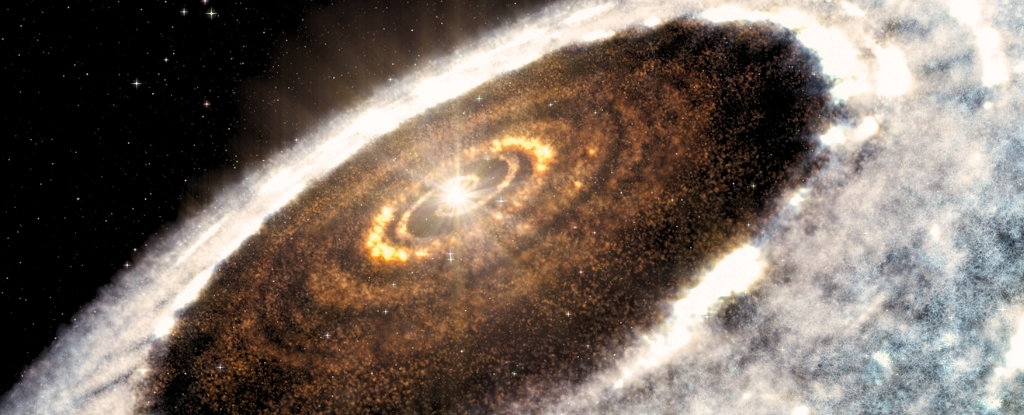
Molecules capable of forming the precursors to sugars and amino acids have been identified for the first time in the disk of gas and dust surrounding a newly formed star. This significant discovery not only enhances our understanding of astrobiology but also provides insights into the chemical processes that lead to the formation of life in the universe.
Research conducted by a team led by Abubakar Fadul from the Max Planck Institute for Astronomy (MPIA) in Germany utilized the Atacama Large Millimeter/submillimeter Array (ALMA) in Chile to analyze the spectrum of light from a protostar known as V883 Orionis, located approximately 1,350 light-years away. The findings reveal evidence of at least 17 complex organic molecules, including ethylene glycol and glycolonitrile, which are essential for the formation of sugars and amino acids.
New Discoveries in Protoplanetary Chemistry
Astrochemist Kamber Schwarz explained that these results suggest that protoplanetary disks inherit complex molecules from earlier stages of star formation. He noted, “Our results suggest that protoplanetary disks inherit complex molecules from earlier stages, and the formation of complex molecules can continue during the protoplanetary disk stage.” This indicates a direct evolutionary connection between interstellar clouds and fully developed planetary systems.
The presence of these molecules within the protoplanetary disk of an outbursting protostar fills a critical gap in our understanding of how biomolecules could survive the tumultuous conditions associated with star formation. The research team posited that the molecules likely formed on icy grains within the molecular cloud and were released into the disk as the protostar’s heat sublimated the ice, allowing the molecules to be detected by ALMA.
Despite the promising results, the signals detected were relatively weak, indicating a need for higher resolution observations at longer wavelengths. Such studies will not only validate the molecules already identified but may also uncover additional complex organic compounds. Fadul expressed optimism about future discoveries, stating, “Perhaps we also need to look at other regions of the electromagnetic spectrum to find even more evolved molecules. Who knows what else we might discover?”
Implications for Understanding Life’s Origins
The implications of this research are profound. The detection of these organic molecules suggests that the building blocks of life could be forming in space before stars and planets even come into existence. This reinforces the notion that the conditions for life may not be unique to Earth but could be widespread across the cosmos.
The study has been published in The Astronomical Journal, highlighting the importance of continued exploration in astrobiology and the chemical processes that underlie the origins of life. As scientists continue to investigate these complex interactions in protoplanetary disks, our understanding of life’s potential to arise in various environments in the universe will undoubtedly expand.






